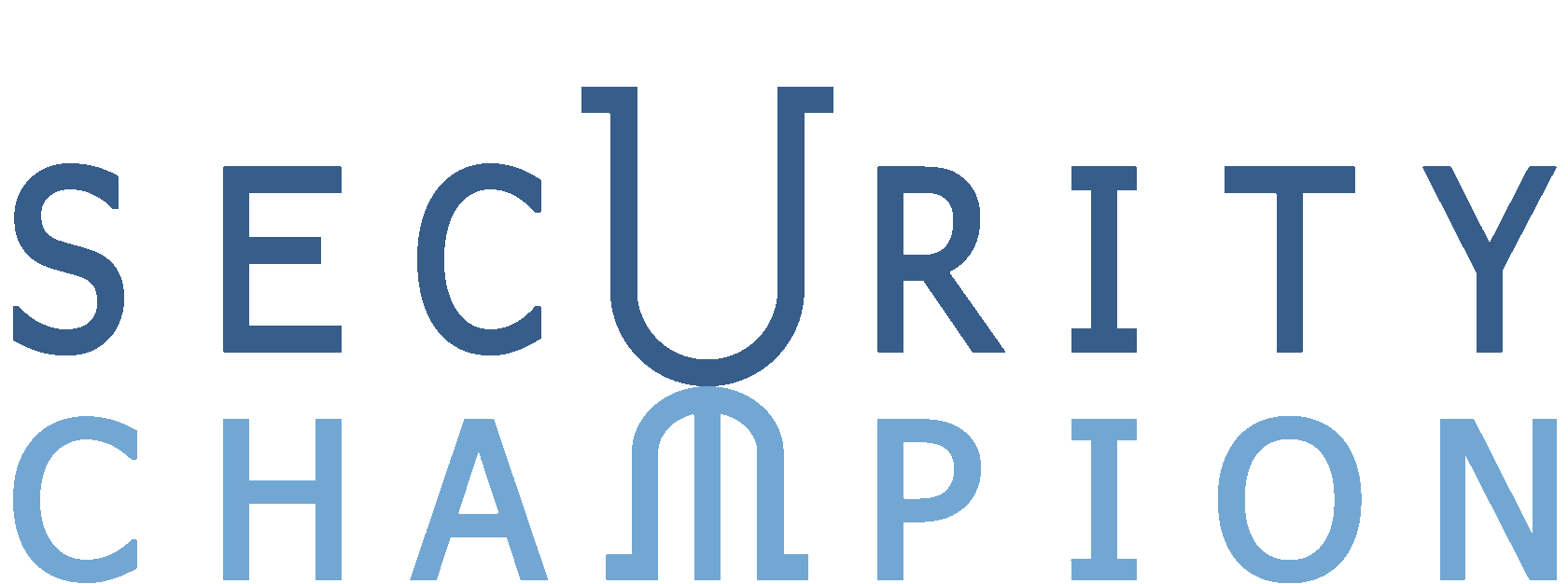Just type your contacts
Just type your contacts
You accept the privacy policy by submitting the form.
Just type your contacts
You accept the privacy policy by submitting the form.
Protect Your Business: The Rising Threat of Phishing in the Digital Age
Protect Your Business: The Rising Threat of Phishing in the Digital Age
Protect Your Business: The Rising Threat of Phishing in the Digital Age
Phishing attacks are becoming more sophisticated, targeting organizations of all sizes. To protect your business, it is essential that your employees are regularly trained to identify phishing attempts and understand why it is important not to click on suspicious links. By implementing multi-factor authentication, you can significantly reduce the risk of unauthorized access. In addition, regularly updating and patching your software can help to close any vulnerabilities that phishers might exploit.
Let's talk about this in more detail.
Let's talk about this in more detail.
Understanding Phishing Attacks and Their Impact on Information Security
Understanding Phishing Attacks and Their Impact on Information Security
In today's interconnected world, cybersecurity threats are ever-evolving. Among these, phishing stands out as one of the most persistent and dangerous forms of cybercrime. This article delves into the mechanics of phishing attacks, their devastating impacts on businesses, and the best practices to safeguard against them.
What is Phishing?
What is Phishing?

A fake website sometimes looks just like a legitimate one, but there are still signs of forgery.
Phishing is a type of cybercrime where attackers attempt to deceive individuals into revealing sensitive information or clicking on malicious links. These attacks often come through:
- Fraudulent emails.
- Bogus websites.
- Suspicious spam messages.
- Social engineering tactics.
Phishers exploit human psychology, manipulating victims into making security mistakes or divulging confidential information.
- Fraudulent emails.
- Bogus websites.
- Suspicious spam messages.
- Social engineering tactics.
Phishers exploit human psychology, manipulating victims into making security mistakes or divulging confidential information.
Types of Phishing Attacks
Types of Phishing Attacks
Phishing comes in various forms, each with its unique methods and targets:
- Email Phishing:
- Spear Phishing:
- Corporate Account Compromise:
- Smishing (SMS Phishing):
- Vishing (Voice Phishing):
The Impact of Phishing on Businesses
The Impact of Phishing on Businesses
Phishing attempts can have severe consequences for companies, including:
- Data Breaches:
- Financial Fraud:
- Reputational Damage:
- Virus and Malware Infections:
Recent Trends in Phishing
Recent Trends in Phishing
Cybercriminals are constantly evolving their tactics. Some recent trends include:
- AI-Generated Phishing Content:
- Exploitation of Current Events:
- Use of HTTPS to Appear Legitimate:
- Automated Phishing Campaigns:
Example: COVID-19 Phishing Schemes
Example: COVID-19 Phishing Schemes

During the pandemic, attackers capitalized on fear and uncertainty with phishing emails purporting to be from health organizations, showcasing how phishing adapts to target specific groups affected by current events.
Best Practices for Phishing Prevention
Best Practices for Phishing Prevention
To protect your business from phishing attempts, consider implementing these strategies:
- Employee Education:
- Multi-Factor Authentication (MFA):
- Email Filtering and Security Software:
- Regular Security Updates:
- Incident Response Planning:
Technical Solutions
Technical Solutions
The Role of Social Engineering in Phishing
The Role of Social Engineering in Phishing
Phishing often relies heavily on social engineering tactics to manipulate victims. Common techniques include:
- Creating a Sense of Urgency:
- Impersonating Trusted Entities:
- Exploiting Curiosity or Fear:
- Using Persuasive Language in Emails:

Phishing email from "support <info_support@lives-msn.com>"
Recognizing Phishing Red Flags
Recognizing Phishing Red Flags
Train employees to watch for these warning signals:
- Suspicious sender email addresses.
- Generic greetings.
- Requests for sensitive information.
- Unexpected attachments.
- Pressure to act quickly.
- Suspicious sender email addresses.
- Generic greetings.
- Requests for sensitive information.
- Unexpected attachments.
- Pressure to act quickly.
The Cost of Phishing Attacks
The Cost of Phishing Attacks
Phishing can be extremely costly for businesses. According to recent studies:
- The average cost of a data breach caused by phishing is in the millions.
- Small businesses are increasingly targeted due to their often weaker security measures.
- Phishing attacks account for a significant percentage of all cybersecurity incidents.
- The average cost of a data breach caused by phishing is in the millions.
- Small businesses are increasingly targeted due to their often weaker security measures.
- Phishing attacks account for a significant percentage of all cybersecurity incidents.
Emerging Threats and Future Trends
Emerging Threats and Future Trends
As technology evolves, so do phishing tactics. Keep an eye on these emerging threats:
- Deepfake Phishing:
- IoT-Based Phishing Attacks:
- Machine Learning-Enhanced Social Engineering:
- Attacks Targeting Cloud Services:
Analyzing Phishing Attempts
Analyzing Phishing Attempts
Infosec professionals use various methods to analyze phishing attempts:
- Examining Email Headers:
- Investigating Link Destinations:
- Studying the Language and Content of Messages:
- Using Automated Tools for Pattern Recognition:
How Companies Can Protect Themselves
How Companies Can Protect Themselves
1. Implement Robust Email Security Measures:
Use advanced email security solutions to detect and block phishing attempts.
2. Conduct Regular Phishing Awareness Training for Employees:
Regular training helps employees stay vigilant and recognize phishing attempts.
3. Use Advanced Threat Protection Systems:
Deploy systems that provide real-time protection against emerging threats.
4. Establish Clear Protocols for Reporting Suspicious Activity:
Encourage employees to report potential phishing attempts and provide clear guidelines on how to do so.
Use advanced email security solutions to detect and block phishing attempts.
2. Conduct Regular Phishing Awareness Training for Employees:
Regular training helps employees stay vigilant and recognize phishing attempts.
3. Use Advanced Threat Protection Systems:
Deploy systems that provide real-time protection against emerging threats.
4. Establish Clear Protocols for Reporting Suspicious Activity:
Encourage employees to report potential phishing attempts and provide clear guidelines on how to do so.
The Importance of Employee Vigilance
The Importance of Employee Vigilance
Employees are often the first line of defense against phishing. Encourage them to:
- Verify sender identities.
- Check URLs carefully before clicking.
- Report potential phishing attempts to IT security teams.
- Be cautious of unsolicited attachments.
- Verify sender identities.
- Check URLs carefully before clicking.
- Report potential phishing attempts to IT security teams.
- Be cautious of unsolicited attachments.
What experts say about social engineering and phishing
What experts say about social engineering and phishing
5 quotes from experts on the threat of phishing and social engineering:
- Brian Krebs"Phishing attacks remain a pervasive threat, exploiting human trust and curiosity to compromise systems" .
- Kevin Mitnick"Social engineering is the cornerstone of many successful cyberattacks, targeting the human element rather than technical vulnerabilities"
- Bruce Schneier"Phishing emails can be remarkably convincing, often replicating trusted sources to deceive even savvy users".
- Jenny Radcliffe"Effective defense against social engineering requires a combination of technology, training, and vigilance".
- Chris Hadnagy"The danger of social engineering lies in its ability to manipulate human behavior, circumventing traditional security measures".
Conclusion: Staying Ahead of Phishing Threats
Conclusion: Staying Ahead of Phishing Threats
Phishing remains a significant risk in the cybersecurity landscape. By staying informed about the latest trends, implementing robust security measures, and fostering a culture of cybersecurity awareness, companies can better protect themselves against these evolving threats.
Remember, the most effective protection against phishing combines technology, education, and vigilance. Stay alert, stay informed, and keep your business safe from this persistent online danger.
Remember, the most effective protection against phishing combines technology, education, and vigilance. Stay alert, stay informed, and keep your business safe from this persistent online danger.

